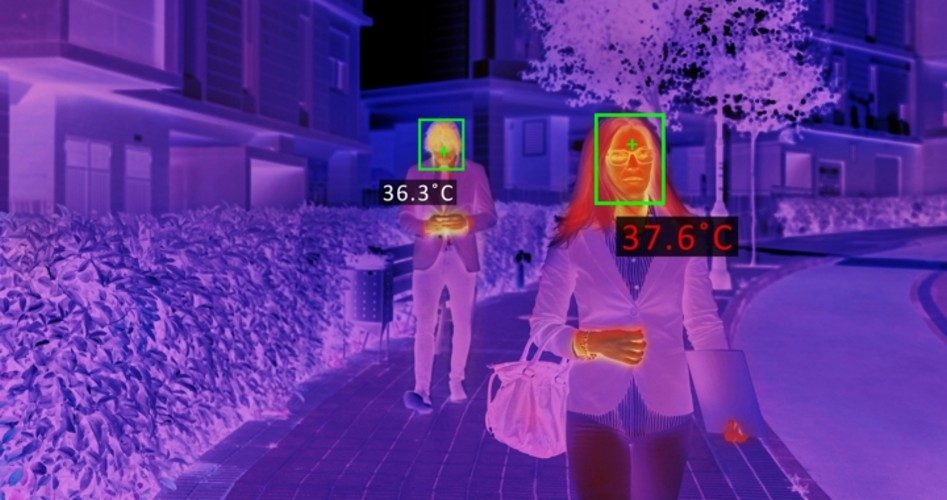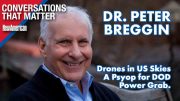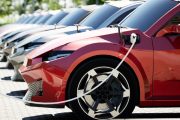
Body-temperature scanners, facial-recognition cameras, biometric tracing, etc., are all seeing rapid advancement in technology as a result of the government-mandated response to the coronavirus outbreak.
While so many small businesses have been devastated by the disease-fueled lockdowns, companies large and small that produce surveillance and biometric devices and technology are making more money than ever before.
These devices are spreading warrantless surveillance into areas of life where it would have been much rarer even a year ago.
Schools and universities have been early adopters of the surveillance technology, assuming that such data would facilitate their efforts to prevent the predicted spread of COVID-19. Students are subjected to the full panoply of intrusive inspection, with facial-recognition cameras and body-temperature scanners becoming common sights at schools at every level, from preschool to post-graduate.
Here’s a report from the blog biometricupdate.com:
School districts across the country are spending thousands, and in some cases hundreds of thousands of dollars, on the technology. Some of the systems are advertised as having the capacity to scan the temperature of up to 70 people a minute, which University of Auburn Professor Emeritus of Kinesiology David Pascoe advises against.
Reliable temperature checks based on digital imaging are possible, if international standards are followed and people are screened one at a time, he says.
Axis Communications VP of Americas Fredrik Nilsson compares the proliferation of body temperature scanning devices to the demand for biometric facial recognition systems in the aftermath of the 9/11 terrorist attacks, when the technology was not yet mature.
Parents should find it shocking that the surveillance tech to which their children are being subjected at school is compared to that deployed after 9/11. After all, the surveillance apparatus installed after that fateful day was, purportedly, aimed at identifying terrorists.
The above-mentioned blog reports that it isn’t simply the infected that are being identified, however:
Telpo’s TPS908T provides body temperature measurement accurate within 0.3 degrees Celsius from a distance of 0.5 to 0.7 meters, with temperature and attendance data transmitted in real-time to the platform for tracking. The automated system also provides mask detection and audible alerts if an elevated temperature or lack of a mask is detected.
Stories about how children have been bullied by school administrators for making a gun shape with their fingers are well known to everyone. One wonders what sort of treatment might await a child caught on camera removing his mask.
Just read this description of devices created to be sold to schools:
Vivera Pharmaceuticals has launched a sanitization device with facial biometrics and body temperature scanning for high occupancy settings.
The BIOZONE dispenses a hypochlorous acid (HOCI) sanitization mist, which is approved by the FDA and EPA and safe for humans of all ages, according to the announcement.
The device is designed to accommodate 300 people per hour, and is intended for schools, offices and event venues.
Salarium has launched a touchless time and attendance device with biometric facial recognition, mask detection and body temperature scanning, which recognizes employees while masked within seconds, according to The Philippine Star.
A record number of families choose to homeschool since schools were closed after the government’s coronavirus crackdown, but the conversion of students into surveillance technology test subjects should make that number much higher.
How do parents send their children back to school after reading stories such as this one published by Nextweb blog:
Fayette County Public Schools, a 24-school district in Georgia, reopened its classroom doors last month. As at many schools around the country, officials in Fayette have concerns about safely bringing students back to school amid a pandemic — and they’re turning to surveillance technology for help.
The school district recently made a deal to purchase up to 75 cameras equipped with thermal imaging. The cameras, made by Hikvision, a Chinese provider of facial recognition tools and other surveillance equipment, cost $7,000 each and rapidly estimate temperatures to monitor potential viral spread on school grounds. The ability to quickly scan for a sign of the virus is an attractive option for schools, one that’s potentially faster and safer than manually taking each visitor’s temperature.
Or this one describing the scene awaiting students at a school district in Texas:
The back-to-school preparations at the Sharyland Independent School District in southern Texas this year include a variety of supplies now common in daily life during the pandemic: plastic dividers, masks and hand sanitizer.
They also include something not as common: body temperature screening terminals.
The district, which serves about 10,200 students across 13 campuses, spent more than $178,000 on 52 walk-through infrared temperature scanners from SafeCheck USA, a Miami-based company that launched about six months ago. The school district made the purchase without testing the technology after watching a demonstration over Zoom, Assistant Superintendent Ismael Gonzalez said.
There are a couple big issues with this school district’s decision.
First, it has been shown that young people are often asymptomatic and a body temperature scanner would only detect those with a fever, a fever that more likely than not is completely unrelated to the coronavirus.
Second, is such “control” of healthcare decision not the domain of parents? Will such surveillance not become increasingly intrusive if parents give a green light to the deployment of the technology in their children’s schools?
One can only imagine the trajectory of such scenarios at schools across the country, particularly in light of facial-recognition cameras and body scanners becoming “a common sight” at schools this year.
It’s particularly worth noting, though, that COVID-19 didn’t start the spread of surveillance technology in schools, it only served as a handy excuse.
Consider this report from a story I wrote in 2018:
A manufacturer of facial-recognition technology has released a guide to help school administrators get the most out of the cameras installed in K-12 classrooms.
RealNetworks provides its facial-recognition technology to schools free of charge in order to help make the country’s schools safer. The guide’s release was timed so as to reach school districts during The National School Safety Center’s annual Safe Schools Week, observed this year October 21-27.
The handbook has six policy sections: notice, consent, security, retention, transparency, and management. It includes information intended to assuage any potential concerns about privacy, and assures administrators, parents, and teachers that the purported security benefits delivered by the cameras and the facial recognition software they use far outweighs any second thoughts about the children’s rights.
As there appears to be no impetus on the part of government — from local to federal — to reduce the restrictions enacted in the wake of the coronavirus outbreak, it seems certain that schools, long known to be drifting toward the teaching of totalitarianism, will, by next year, take such tyranny as just a necessary evil. It will be as the renowned English poet Alexander Pope wrote:
Vice is a monster of so frightful mien,
As, to be hated, needs but to be seen;
Yet seen too oft, familiar with her face,
We first endure, then pity, then embrace.
Image: doble-d/iStock/Getty Images Plus
Joe Wolverton II, J.D., is the author of the books The Real James Madison and “What Degree of Madness?”: Madison’s Method to Make America STATES Again. His latest book — The Founders’ Recipe — provides selections from the 37 authors most often quoted by the Founding Generation. He hosts the YouTube channel “Teacher of Liberty” and the Instagram account of the same name.



